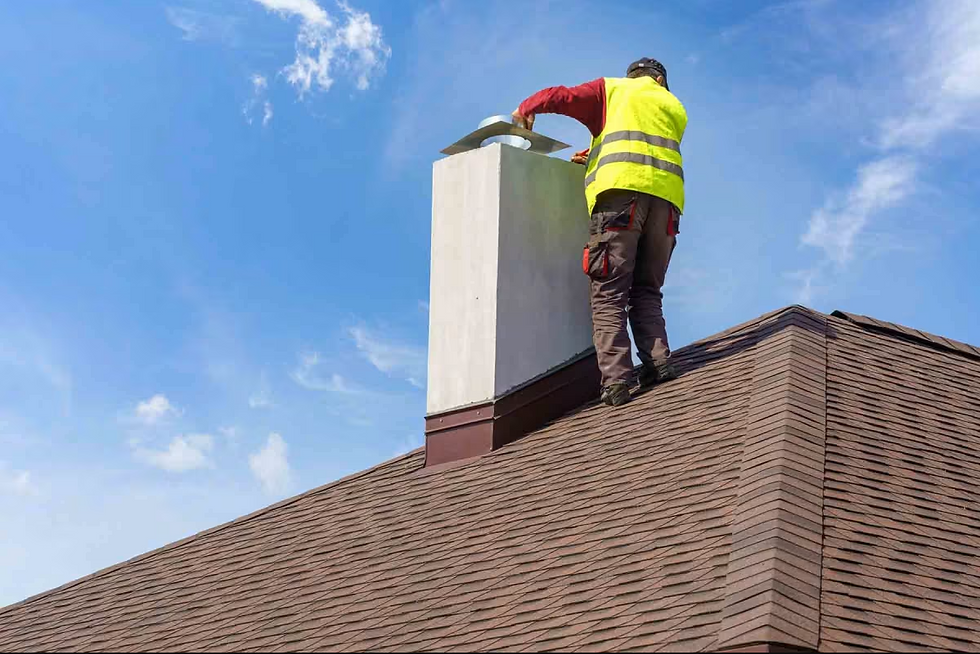Structural Home Inspection Cost in Nebraska | Pricing Guide
- Growth Pro
- 55 minutes ago
- 4 min read

A structural home inspection is a detailed evaluation of a property’s foundation, framing, load-bearing components, and overall structural integrity. It helps homeowners and buyers understand the true condition of a home and identify any issues that may affect safety or long-term durability.
Knowing the structural home inspection cost in Nebraska is essential for anyone planning to buy, sell, or maintain a property. Inspection costs can vary based on factors such as home size, age, and the scope of services included. Understanding these costs upfront helps you budget accurately and avoid unexpected expenses.
The purpose of this blog post is to provide a clear and detailed breakdown of the structural home inspection cost in Nebraska, explain the pricing models used by local inspectors, and help you make informed decisions when scheduling an inspection.
Cost Range for Structural Home Inspections in Nebraska
Understanding the structural home inspection cost in Nebraska is essential for homeowners, buyers, and investors who want to make informed decisions. Inspection pricing can vary widely depending on the home’s size, age, and the level of detail required. Before diving into the exact numbers, it’s important to know what influences overall property evaluation prices, home inspection fees, and structural analysis costs across the state.
A. General Cost Range ($200 – $550)
The general structural home inspection cost in Nebraska usually falls between $200 and $550. This price range reflects standard home inspection fees across the state and covers the essential evaluation of a home’s structural components. Depending on the inspector, the building assessment cost may increase if more time, tools, or specialized equipment are required.
B. Average Cost for Standard Home Inspections ($350 – $450)
A standard home inspection covering overall home condition rather than only structural elements typically costs $350 to $450 in Nebraska. This represents the state’s average residential inspection expenses, which include checks for roofing, electrical systems, plumbing, and visible structural issues. The final property evaluation price may vary based on the inspector’s experience and the complexity of the home.
C. Factors Influencing Costs
1. Size of the Home
One of the biggest factors affecting inspection service rates is the size of the property. Larger homes require more time to inspect, which increases both the overall house survey charges and the depth of the property condition assessment.
2. Age of the Home
Older homes often have more wear, settling, or outdated construction methods. As a result, the structural analysis costs may be higher because inspectors must spend extra time examining foundations, framing, and potential issues related to moisture or damage.
3. Specific Services Included
The final home safety inspection fee can increase if additional specialized services are included. Add-ons such as radon testing, mold inspections, thermal imaging, or foundation assessments significantly impact the total inspection industry pricing. Homes with visible damage or moisture issues often require these extra evaluations.
Pricing Models Used by Home Inspectors
A. Per Square Foot Pricing
Many inspectors in Nebraska use a per-square-foot pricing structure, which helps create predictable and transparent cost estimates for clients.
1. Industry Standard ($5 per 1,000 square feet)
The industry benchmark for structural and general home inspections is typically around $5 per 1,000 square feet. This model adjusts pricing based on property size, making it easier for homeowners to estimate the inspection cost based on the home’s total area.
2. Example Calculation for a 2,000-Square-Foot Home
Using this model, a 2,000-square-foot home would cost approximately $10 for the square-footage-based portion of the inspection fee. However, this cost is usually integrated into the broader pricing structure, meaning the final cost still aligns with Nebraska’s standard home inspection price range ($350–$450).
B. Flat Fee Pricing
Another common pricing method is flat rate pricing, which gives clients a fixed inspection fee regardless of the home’s exact square footage up to a set limit.
1. Explanation of Flat Rates
With flat fee pricing, inspectors charge a single base price for homes within a specific size range (for example, up to 2,500 square feet). This method simplifies the process and eliminates the need to calculate cost based on exact dimensions.
2. Additional Fees for Extra Square Footage
If a home exceeds the inspector’s maximum size threshold, additional charges are applied. These extra fees typically range from $25 to $50 per added 500 square feet, depending on the company’s pricing policies.
C. Comparison of Pricing Models
1. Advantages of Per Square Foot Pricing
Per square foot pricing offers several benefits for homeowners seeking transparent and accurate inspection estimates:
Provides more precise and customized pricing based on the exact home size
Ideal for very small or exceptionally large homes, where flat rates may not reflect true inspection effort
Helps clients clearly understand the cost breakdown by property size
Ensures fair pricing that aligns with the actual workload and time required
2. Benefits of Flat Rate Pricing
Flat rate pricing is popular among both inspectors and homeowners for its simplicity and ease of understanding:
Straightforward and easy to understand with no complex calculations
Highly cost-effective for average-sized or medium-sized homes
Offers predictable and stable pricing, especially for standard residential properties
Speeds up the quoting process, allowing inspectors to provide faster and more consistent estimates
Understanding the structural home inspection cost in Nebraska is an essential step for anyone buying, selling, or maintaining a property. Inspection costs can vary widely based on the home’s size, age, and the type of services included, but having a clear idea of average pricing helps you budget confidently and avoid unexpected expenses.
Whether you choose a per-square-foot pricing model or a flat rate, both offer valuable benefits depending on your home’s layout and inspection needs. Standard inspections typically cover overall home condition, while structural inspections provide deeper insights into foundations, framing, and critical load-bearing components making them especially important for older homes or properties with visible structural concerns.

.png)



Comments